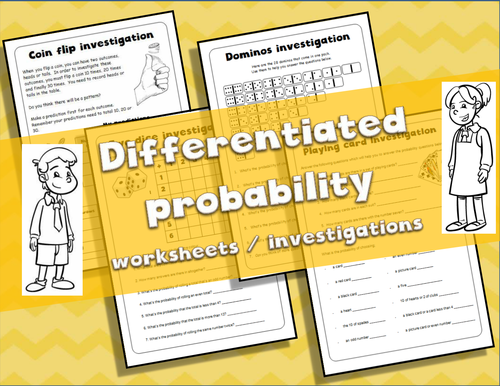
40Uploads
41k+Views
27k+Downloads
Math for early childhood

Wall clock in Welsh, Cloc CA2 barod i lamyneiddio
Arddangosfa cloc am eich dosbarth. Addurnwch eich cloc ddiflas fel ei fod yn adnodd ar gyfer gwersi Mathemateg.
Barod i lamyneiddio a gosod fel y llun.

Times tables display
I have created these to use in my class next year and am so pleased with how they’ve turned out. I have only created them to 10x.
I have included a Powerpoint presentation to learn the 2x times table and black and white copies that you can use on worksheets.
I hope you enjoy too.

Differentiated money worksheets
8 differentiated money worksheets created for year 4. This includes;
• Adding money by counting repeating coins,
• Adding money ordered largest to smallest,
• Adding money in random orders,
• Adding decimals (column method),
• Reasoning skills from a menu (following pictures),
• Adding two 2 digit numbers,
• Finding change from £1, £2, £5 and/or £10,
• Money word problems (not differentiated but gets harder).
There is a differentiated ‘First to spend £10’ game and a laminate to use with lower abilities (to use a whiteboard pen).

4 Differentiated probability worksheets / investigations
I’ve used these very successfully with year 5 to introduce a practical application to probability. I recommend that you use coins, dice, dominos and playing cards during the lessons but they can be used just as easily without. You may also have a large dice, dominos or playing cards that you can use to introduce the 4 lessons, or to use with lower abilities.
The tasks in order of complexity are;
• Coin toss investigation,
• Dice roll investigation,
• Dominos investigation and
• Playing cards investigation.

Introduction to the language of probability quiz
Fun game / presentation to introduce the language of probability.
It uses the terms; Impossible, Very unlikely, Unlikely, Even chance, Likely, Very likely and Certain.
There is a brief introduction and these slides can be removed if you wish, including rules of the game.
The board has 12 interactive questions where pupils click on their choice before the question is revealed. There are 7 possible answers to each question. Clicking the wrong answer will make the answer shake to indicate that it is wrong. When a correct answer is chosen, it will take you back to the question board.
You can keep a record of the scores when the presentation is active by typing them in yourself on the question screen. It is also possible to name the teams in the same way.

Algebra picture puzzles introduction - powerpoints and worksheets KS2
Introduce Algebra at Primary / Secondary with these 22 ppts and 12 worksheets (9 of which are editable).
The 22 presentations begin with simple picture representations and explore pupil’s reasoning skills through a variety of sized and shaped grids, representations of scales as equal and scales as amounts to reasonably compare.
Most numbers can be edited on the powerpoints and blank worksheets are provided for extra differentiation (if necessary).
A lovely introduction to Algebra in the new Curriculum for Wales (CfW).

5 Weeks Mastery interactive Mathematics PowerPoints and resources – Reception, Weeks 2-6
Please download week 1 for FREE first to see the product examples https://www.tes.com/teaching-resource/mastery-weekly-interactive-mathematics-powerpoints-reception-counting-number-recognition-double-11961922
I created these because I had no resources and they turned out to be amazing! They proved so successful with the children and the two other Reception teachers; I continued to produce them for the rest of the year. Worksheets, matching games etc. are included.
You will receive 5 interactive PowerPoints. A list of their contents. Worksheets, games and activities I created to support their learning.
I use each presentation at least 3 if not 4 times a week prior to Maths session. By the end of the week those who were struggling on Monday had a better understanding by the end of the week. The children are chosen to come to the whiteboard for most of the PowerPoint pages e.g. to pop the bubbles whilst counting down from 10, which they love (with improved listening skills!).
Many concepts e.g. the idea of zero or addition are much easier to understand visually e.g. eating all of the cakes (gone) or combining items (altogether), telling number stories.
The PowerPoints start from scratch. Unfortunately, the difference between the highest achiever and lowest at Reception can be enormous and my philosophy is ‘no one left behind’. They change pace quickly and certain aspects such as the ‘doubling bunny’ rely on repetition and learning ‘the action’ (children physically perform it) so that they can say the answers before tackling the maths later on in the year.
Each lesson begins with:
Shape discussion (click the shape to make it dance),
Counting upwards (from the number of the week),
Counting from 10 to zero (clicking on the images so that they disappear one by one).
Different concepts are then added each time.
I have created these PowerPoints to satisfy:
• Maths mastery,
• Little Big Maths,
• The Welsh foundation phase curriculum / English eyfs curriculum,
• Individual profiles (Reception),
• It introduces the part part whole aspect of Singapore Maths and also the bar method (later on),
• It also utilises ideas from the White Rose Maths.
Week one is free so that you can see how this works in your class. The rest are in half termly packs.







